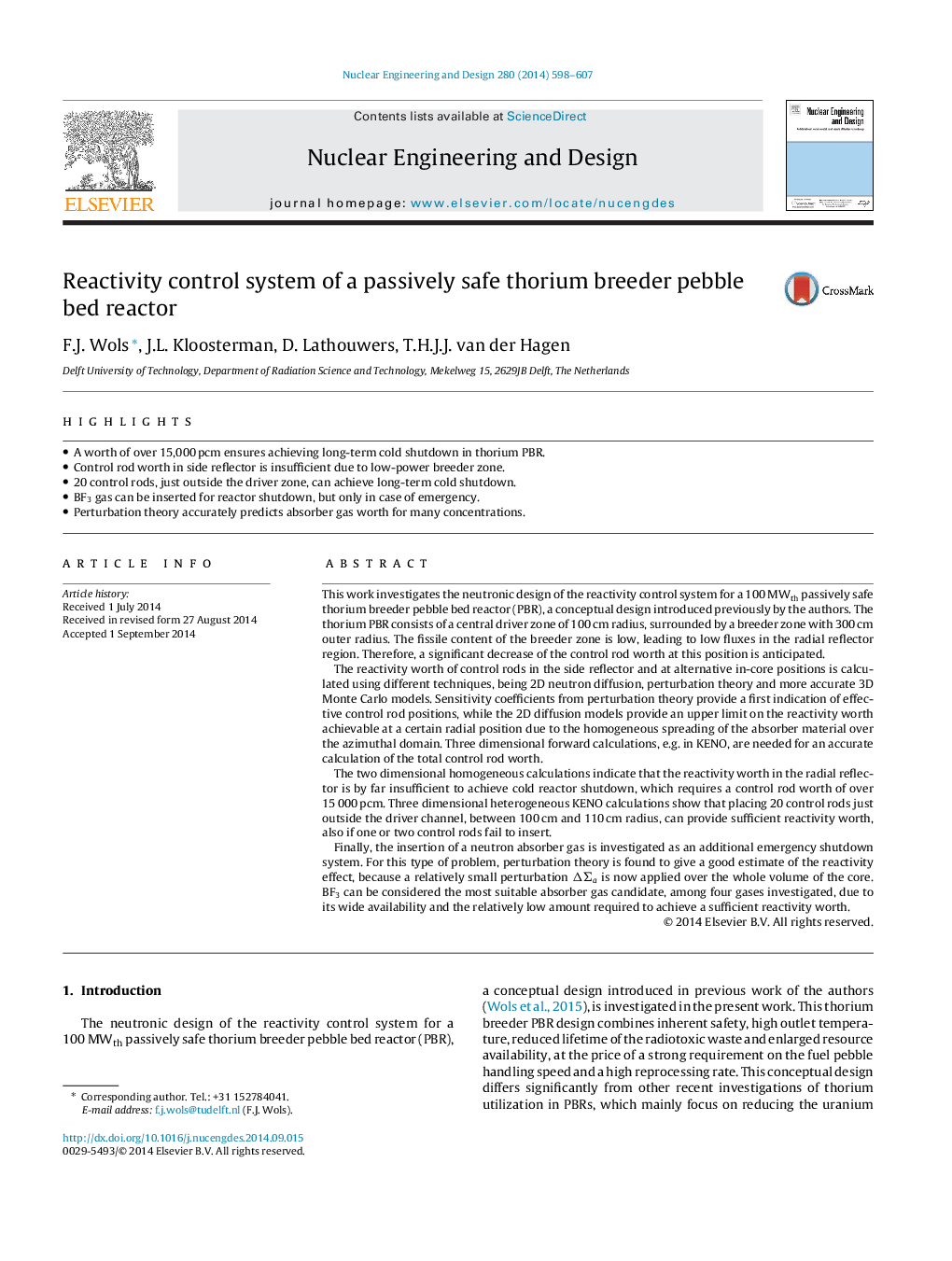| Article ID | Journal | Published Year | Pages | File Type |
|---|---|---|---|---|
| 296283 | Nuclear Engineering and Design | 2014 | 10 Pages |
•A worth of over 15,000 pcm ensures achieving long-term cold shutdown in thorium PBR.•Control rod worth in side reflector is insufficient due to low-power breeder zone.•20 control rods, just outside the driver zone, can achieve long-term cold shutdown.•BF3 gas can be inserted for reactor shutdown, but only in case of emergency.•Perturbation theory accurately predicts absorber gas worth for many concentrations.
This work investigates the neutronic design of the reactivity control system for a 100 MWth passively safe thorium breeder pebble bed reactor (PBR), a conceptual design introduced previously by the authors. The thorium PBR consists of a central driver zone of 100 cm radius, surrounded by a breeder zone with 300 cm outer radius. The fissile content of the breeder zone is low, leading to low fluxes in the radial reflector region. Therefore, a significant decrease of the control rod worth at this position is anticipated.The reactivity worth of control rods in the side reflector and at alternative in-core positions is calculated using different techniques, being 2D neutron diffusion, perturbation theory and more accurate 3D Monte Carlo models. Sensitivity coefficients from perturbation theory provide a first indication of effective control rod positions, while the 2D diffusion models provide an upper limit on the reactivity worth achievable at a certain radial position due to the homogeneous spreading of the absorber material over the azimuthal domain. Three dimensional forward calculations, e.g. in KENO, are needed for an accurate calculation of the total control rod worth.The two dimensional homogeneous calculations indicate that the reactivity worth in the radial reflector is by far insufficient to achieve cold reactor shutdown, which requires a control rod worth of over 15 000 pcm. Three dimensional heterogeneous KENO calculations show that placing 20 control rods just outside the driver channel, between 100 cm and 110 cm radius, can provide sufficient reactivity worth, also if one or two control rods fail to insert.Finally, the insertion of a neutron absorber gas is investigated as an additional emergency shutdown system. For this type of problem, perturbation theory is found to give a good estimate of the reactivity effect, because a relatively small perturbation ΔΣa is now applied over the whole volume of the core. BF3 can be considered the most suitable absorber gas candidate, among four gases investigated, due to its wide availability and the relatively low amount required to achieve a sufficient reactivity worth.
